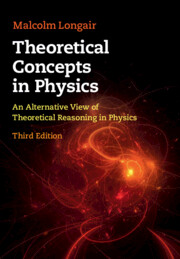Book contents
- Frontmatter
- Dedication
- Contents
- Preface and Acknowledgements
- 1 Introduction
- Case Study I The Origins of Newton’s Laws of Motion and of Gravity
- Case Study II Maxwell’s Equations
- Case Study III Mechanics and Dynamics: Linear and Non-linear
- 8 Approaches to Mechanics and Dynamics
- 9 The Motion of Fluids
- 10 Dimensional Analysis, Chaos and Self-Organised Criticality
- Case Study IV Thermodynamics and Statistical Physics
- Case Study V The Origins of the Concepts of Quantisation and Quanta
- Case Study VI Special and General Relativity
- Case Study VII Cosmology and Physics
- Author Index
- Subject Index
10 - Dimensional Analysis, Chaos and Self-Organised Criticality
from Case Study III - Mechanics and Dynamics: Linear and Non-linear
Published online by Cambridge University Press: 27 March 2020
- Frontmatter
- Dedication
- Contents
- Preface and Acknowledgements
- 1 Introduction
- Case Study I The Origins of Newton’s Laws of Motion and of Gravity
- Case Study II Maxwell’s Equations
- Case Study III Mechanics and Dynamics: Linear and Non-linear
- 8 Approaches to Mechanics and Dynamics
- 9 The Motion of Fluids
- 10 Dimensional Analysis, Chaos and Self-Organised Criticality
- Case Study IV Thermodynamics and Statistical Physics
- Case Study V The Origins of the Concepts of Quantisation and Quanta
- Case Study VI Special and General Relativity
- Case Study VII Cosmology and Physics
- Author Index
- Subject Index
Summary
The majority of physics problems are impossible to solve by analytic means. Various strategies have been developed to cope with the highly non-linear nature of many of these problems. Dimensional analysis provides a powerful tool for addressing many complex problems, suggesting the form the solutions must have. Examples include the non-linear pendulum, explosions, flow at high Reynolds number and the law of corresponding states. The study of chaotic phenomena became feasible with the development of high speed computers and revealed regularities despite the apparent unpredictability of the systems. Scaling laws for extremely complex and non-linear problems lead to the concept of self-organised criticality, illustrated by the model computations for rice and sand piles.
Keywords
- Type
- Chapter
- Information
- Theoretical Concepts in PhysicsAn Alternative View of Theoretical Reasoning in Physics, pp. 204 - 240Publisher: Cambridge University PressPrint publication year: 2020

